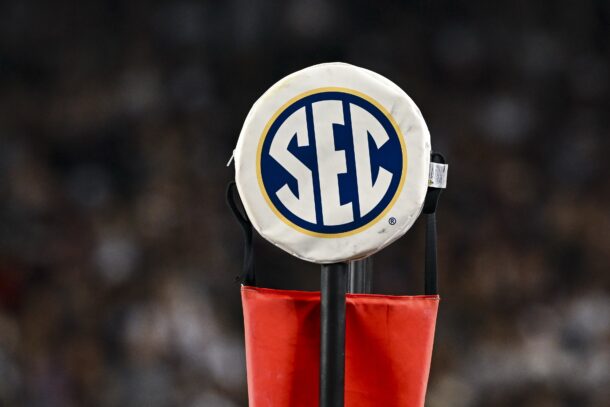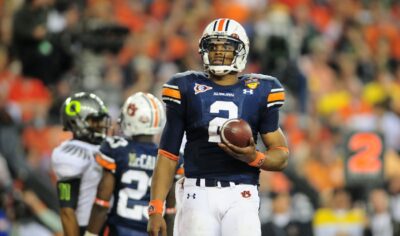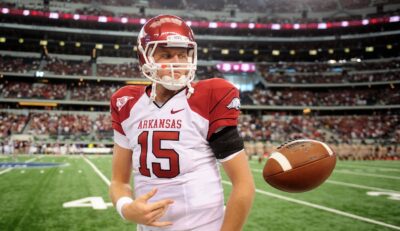Big 12 commish calls for national targeting standards after Arizona State’s loss to Texas
Big 12 commissioner Brett Yormark issued a call on Thursday for the College Football Playoff to adopt a national standard for the way the targeting rule is applied throughout the competition. The move comes less than 24 hours after a highly controversial no-call with a little over a minute remaining in Monday’s Peach Bowl snatched the spotlight.
“As a member of the College Football Playoff management committee, I have had multiple discussions seeking clarity surrounding the targeting call on Arizona State’s final drive of the fourth quarter with (CFP executive director) Richard Clark,” Yormark said in a statement to Yahoo Sports’ Ross Dellenger. “Moving forward, we need to address CFP officiating to ensure national standards are developed. These standards will be crucial to the CFP’s future, and I look forward to discussing them with my fellow committee members when we meet next.”
With 1:15 to play in the fourth quarter of Monday’s CFP quarterfinal between Texas and Arizona State, Melquan Stovall brought in a 10-yard reception over the middle and was immediately crushed by Texas’s Michael Taaffe.
Taaffe’s helmet made contact with Stovall’s helmet almost immediately after Stovall got his hands on the football and turned to look upfield. Officials reviewed the play and decided against a targeting penalty.
Had a flag been thrown, Arizona State would have gained an automatic first down and moved to the Texas 37-yard-line. With 1:03 on the game clock, Arizona State would have been right on the edge of field goal range and might have been able to attempt a potential game-winner.
Instead, Arizona State punted and the 2 sides went to overtime. Texas won 39-31 in double-overtime.
After the game, ESPN’s Scott Van Pelt said the call is “targeting 100 times out of 100.” CBS Sports rules analyst Gene Steratore also tweeted Thursday morning that a flag should have been thrown. By the language of the targeting rule, Stovall should have been deemed a defenseless receiver. And that’s what ESPN’s rules analyst, Matt Austin, said during the broadcast.
ASU head coach Kenny Dillingham told reporters after the game, “I don’t know what targeting is,” and said he needs to get a better grasp of what it is. But Dillingham wasn’t alone. Many felt the same way watching the game.
Because there was also a moment earlier in the fourth quarter when Arizona State picked off Texas quarterback Quinn Ewers, but during the play, Texas wideout Isaiah Bond was leveled by an Arizona State defender. A targeting flag would have negated the interception. ASU tied the game at 24-24 on the ensuing drive.
The targeting rule has been a constant source of frustration throughout college football. Its inconsistent application shows up every weekend as one officiating crew’s definition of targeting is often different from another crew’s. The exact language of the rule can be found here.
Derek Peterson does a bit of everything, not unlike Taysom Hill. He has covered Oklahoma, Nebraska, the Pac-12, and now delivers CFB-wide content.







